Huawei Mobile Services
Huawei Mobile Services Project Setup
Create an AppGallery Connect project. Go to Development and Services → Add project:

Add a new app to the project:

Provide your app details:
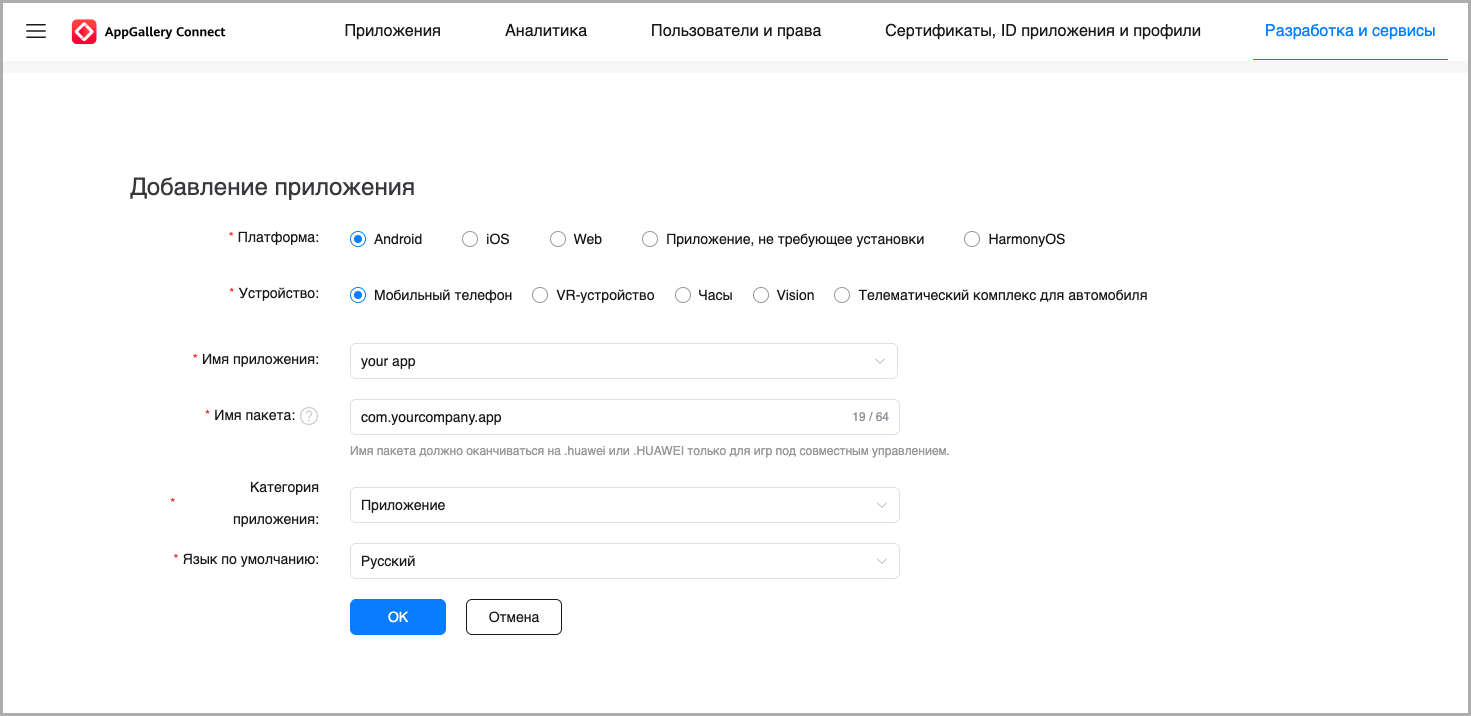
Download the agconnect-services.json file:
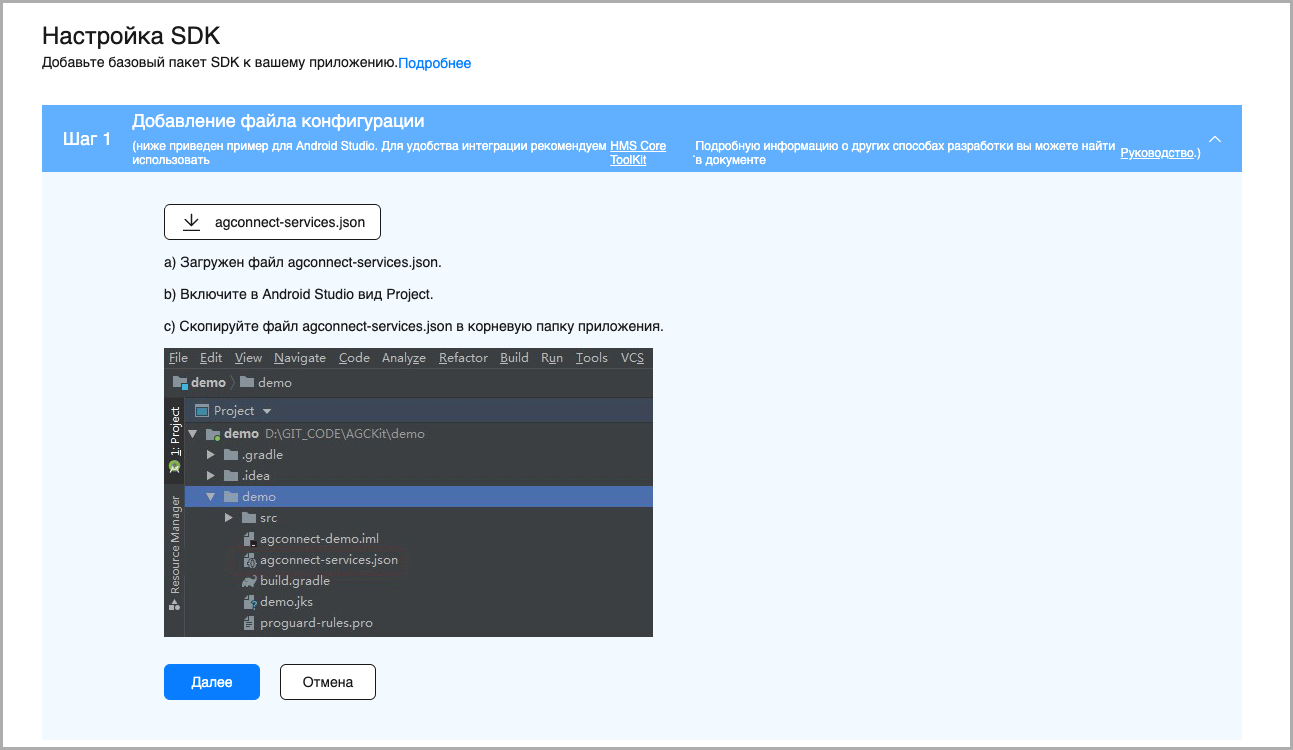
Return to the project settings and add the SHA-256 certificate fingerprint. You can obtain it by running ./gradlew signingReport in the root directory of your app project:
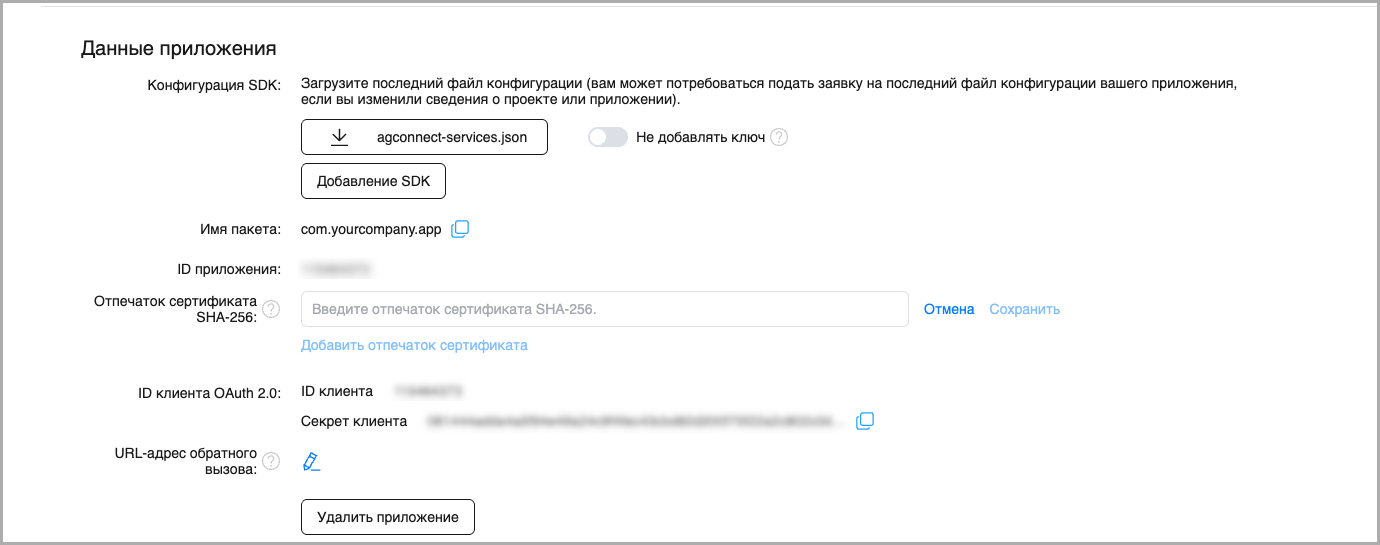
In the left sidebar, select Push Kit under Growth:
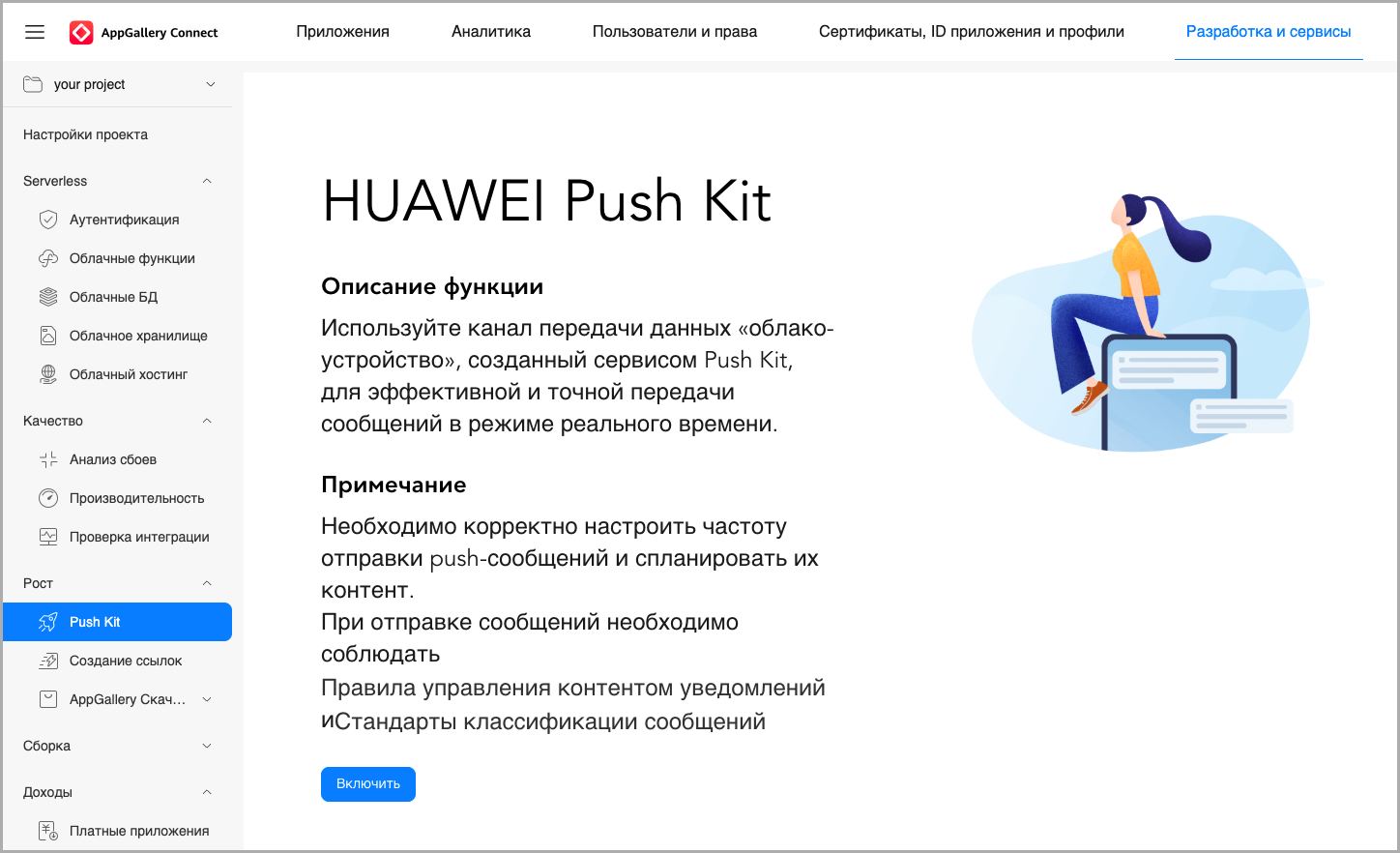
Click Enable → Select data storage location:
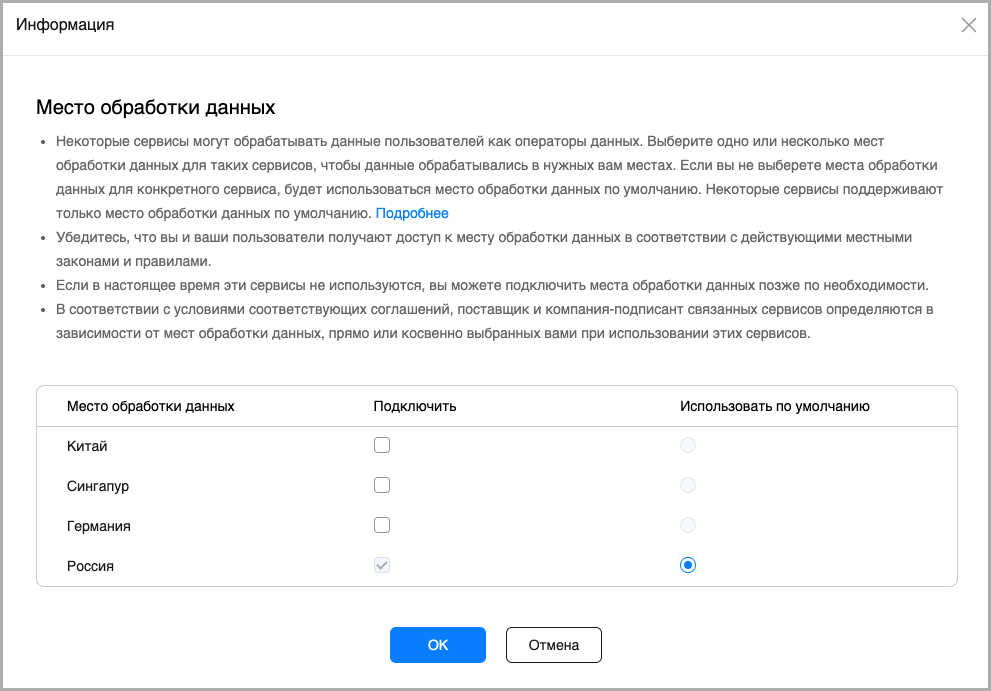
Configuring the Altcraft Resource
In the Altcraft platform, create a resource or add a new communication channel — Push — to an existing one. Then, in the resource settings, select the Android platform and enable Huawei Mobile Services:

Scroll down to the Huawei settings and specify the App ID, OAuth 2.0 client ID, and OAuth 2.0 client secret:

After making changes, don’t forget to save the resource.
Integrating Huawei Push Kit into the App Project
Move the downloaded agconnect-services.json file to the root directory of your app module (app):
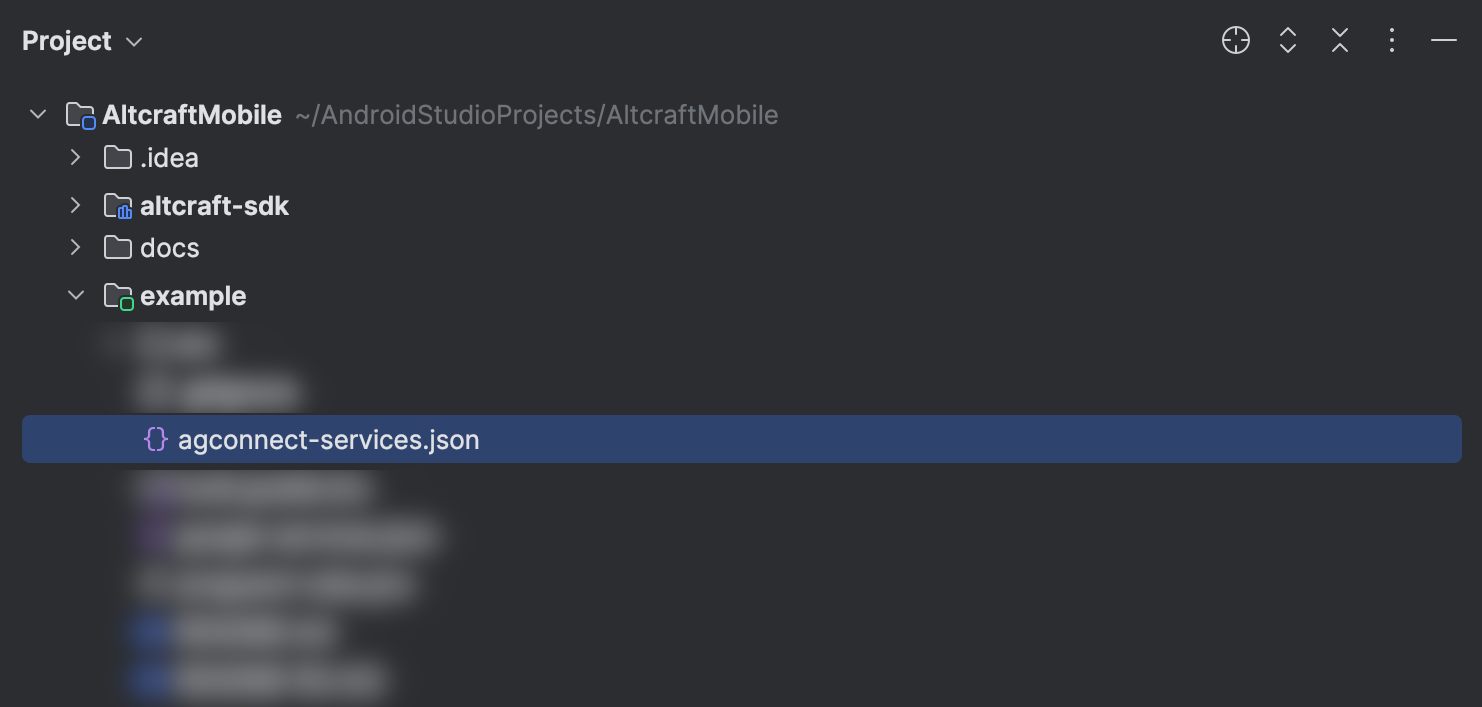
Add repositories and dependencies to your Gradle files:
settings.gradle.kts (project settings)
dependencyResolutionManagement {
repositories {
// Other repositories..
maven("https://developer.huawei.com/repo/")
}
}
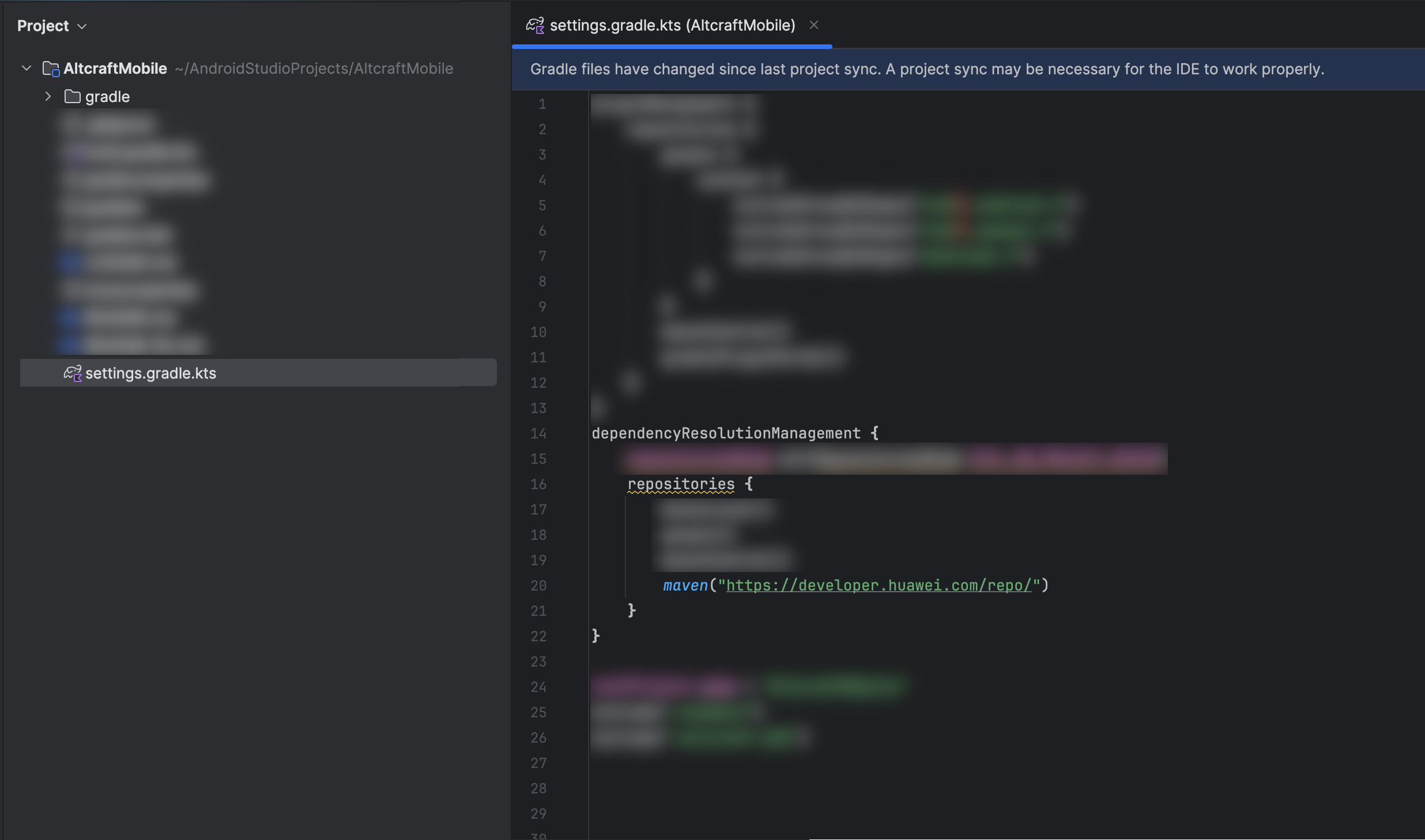
build.gradle.kts (project level)
buildscript {
repositories {
maven("https://developer.huawei.com/repo/")
}
dependencies {
classpath("com.android.tools.build:gradle:8.10.1") // Important: use the AGP version your project uses.
classpath("com.huawei.agconnect:agcp:1.9.1.301")
}
}

build.gradle.kts (app level)
plugins {
id("com.huawei.agconnect")
}
dependencies {
implementation("com.huawei.hms:push:6.11.0.300")
implementation("com.huawei.agconnect:agconnect-core:1.7.3.302")
}
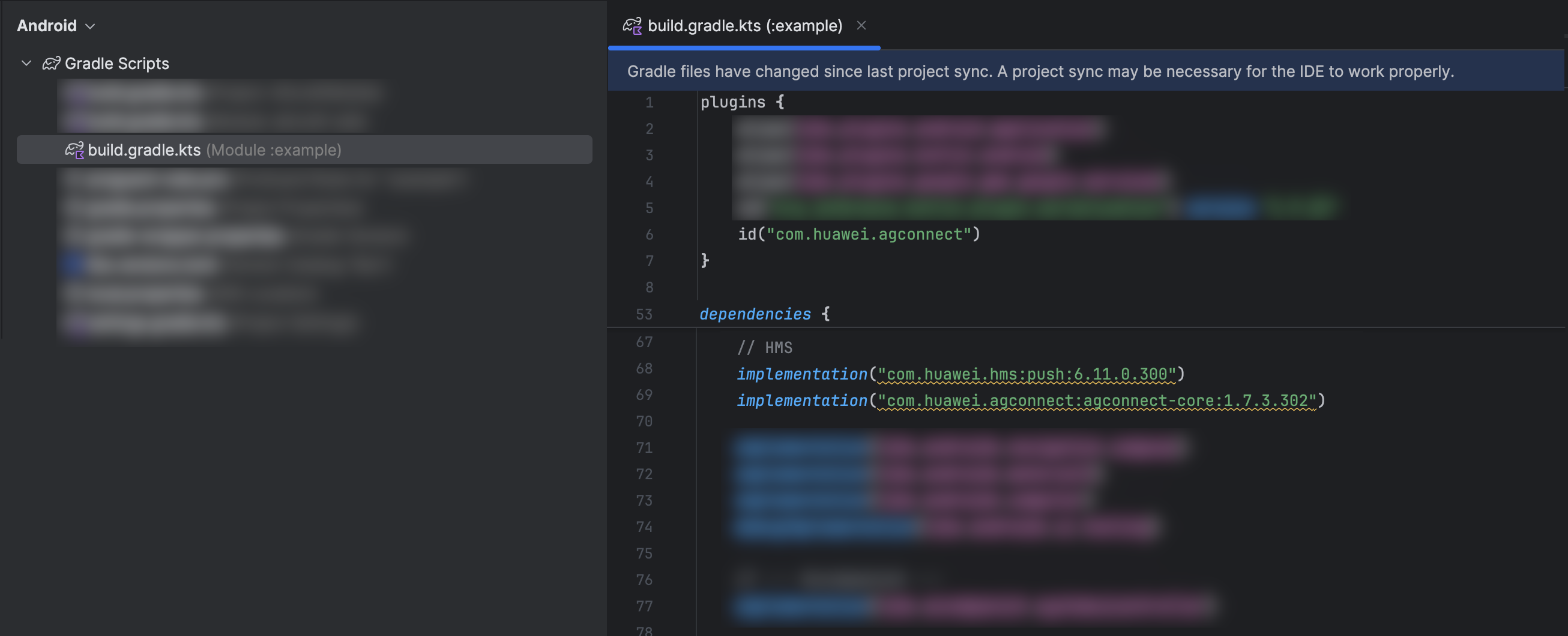
Information about the latest dependency versions is available on Huawei Developer pages:
After adding the repository and dependencies, sync your Gradle changes.
Creating a Class Extending HmsMessageService()
Create a class that extends HmsMessageService():
import com.huawei.agconnect.AGConnectOptionsBuilder
import com.huawei.hms.aaid.HmsInstanceId
import com.huawei.hms.api.HuaweiApiAvailability
/**
* HMS service for handling push tokens and incoming notifications.
*
* Extends [HmsMessageService] and overrides key HMS callback methods.
*/
class HMSService : HmsMessageService() {
/**
* Called when a new HMS token is generated.
*
* @param token The new HMS token.
*/
override fun onNewToken(token: String) {
super.onNewToken(token)
}
/**
* Called when a push message is received from HMS.
*
* Forwards the message with additional metadata to all receivers.
*
* @param message The received [RemoteMessage].
*/
override fun onMessageReceived(message: RemoteMessage) {
// Message
}
}
Updating the App Manifest
Add the HMSService declaration to your app’s AndroidManifest.xml:
<service
android:name="com.altcraft.hms.HMSService"
android:exported="false">
<intent-filter>
<action android:name="com.huawei.push.action.MESSAGING_EVENT"/>
</intent-filter>
</service>
Replace com.altcraft.hms.HMSService with your own package and class name.